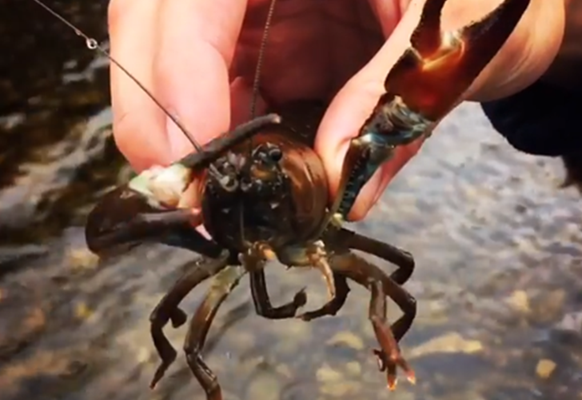What are invasive species?
Invasive species can be plant or animal species, often (although not always) non-native to the UK. They can take over an area and cause harm to our native animal and plant species.
What problems can they cause?
Invasive species can cause various problems either by spreading disease, by predation or just out-competing native animals and plants for food or resources. For example, the grey squirrel, originally from North America, has caused the near extinction of our native red squirrel due to the spread of the squirrel pox virus and by direct competition for food. The North American mink has caused a huge decline in our native water vole populations due to over predation.
Plants can be invasive too, although they are less widely known.
The Big 5:
Japanese Knotweed spreads rapidly and can grow to over 7m tall, shading out all other plants below. It can grow through concrete and causes major structural problems to buildings. Under Schedule 9 of the Wildlife and Countryside Act 1981, it is an offence to cause Japanese Knotweed to grow in the wild.
Himalayan Balsam is often found along rivers and streams. Like Japanese Knotweed, it grows rapidly and spreads easily, and forms a dense canopy which covers other vegetation below so nothing else can grow.
Giant Hogweed can grow to 3m tall and out-competes native plant communities by over-shading. If you see it please avoid touching it! Chemicals in it cause skin photosensitivity on contact, resulting in burns and irritation.
Rhododendron Ponticum can grow to 5m tall and also shades over native plants. All parts of the plant are toxic to wildlife including earthworms, so dense stands of this plant have a very negative impact on biodiversity.
New Zealand Pigmyweed spreads rapidly, forming a dense mat covering ponds and lake edges in a blanket smothering all other plant life. It is very difficult to eradicate as one tiny fragment can re-grow to form a new plant.
Who will need a survey?
As part of the planning process, Local Authorities often require a survey for invasive species, particularly those pesky plants like Japanese Knotweed. If you are buying property, are a developer of a brownfield site or are undertaking work near a watercourse, then an invasive species survey to check for these plants may be necessary.
What happens next?
Don’t panic if your survey finds invasives on site as work can still proceed. An Ecologist can draw up a plan to remove and safely dispose of them. Works will likely follow a method statement the Ecologist has written to prevent the spread and recolonisation of the site by invasive species.
Feel free to contact EcoNorth to find out how we can help you.

